Cultivating Curiosity with Grant Lewis is an advanced exploration into the art and science of inquiry-based learning. This course is meticulously crafted to elevate educators' proficiency in designing, implementing, and refining inquiry-based pedagogical practices. In this course, Educators will learn to:
Transform your instructional approach with a focus on cultivating a dynamic learning environment that nurtures intellectual curiosity and fosters advanced problem-solving skills. Enroll today to advance your educational expertise and make a profound impact in your classroom.

$89
Lessons: 42
Lessons: 42

Discover essential strategies for effective inquiry-based learning.
Duration
00:02:18In this course introduction, Grant Lewis offers a deep dive into inquiry-based teaching. You'll learn how to tailor inquiry-based learning to your context, from planning and delivering engaging inquiries to assessing and reflecting on student progress. The course covers the essence of inquiry-based learning, various models, curriculum mapping, provocations, and fostering student thinking. Get ready to challenge your understanding and expand your teaching methods.

Explore key concepts and rethink inquiry-based teaching approaches.
Duration
00:03:10In this first module, you'll delve into the core principles of inquiry-based teaching, differentiating what it is and isn't. Grant Lewis guides you through reflective tools and protocols, including Harvard University's Project Zero "I used to think, now I think" protocol, to help you document and deepen your understanding. This session sets the foundation for your learning journey, encouraging critical thinking and self-reflection.

Deepen your understanding through thought-provoking video clips.
Duration
00:02:31In this session, Grant Lewis encourages you to reflect on your evolving understanding of inquiry-based learning. You'll watch carefully selected video clips designed to challenge and expand your perspective on inquiry-based teaching. As you engage with these clips, you'll fill out an organizer to capture insights and ideas that resonate with you. This module offers a dynamic way to explore and solidify your thinking before moving on to the next stage of the course.
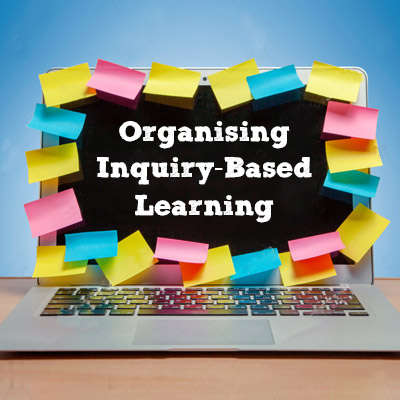
Using a frame model to structure your inquiry-based learning understanding.
Duration
00:01:51In this session, Grant Lewis guides you through the process of organizing your thoughts on inquiry-based learning using a frame model. After engaging with thought-provoking video clips, you’ll apply your newfound insights by completing a chart that explores characteristics, examples, and non-examples of inquiry-based learning. This exercise is designed to deepen your understanding and help you solidify key concepts as you continue your journey through the course.

Explore a semi-completed Frayer model with examples and insights.
Duration
00:00:52In this video, viewers are guided through a semi-completed Frayer model, showcasing characteristics, examples, and non-examples of effective inquiry practices. We emphasise that their entries are not definitive but offer a basis for comparison. Key elements such as developing questions, student reflection, and student voice are highlighted, setting the stage for a deeper exploration in the next module.

Exploring strategies for fostering student-led inquiry and deeper understanding.
Duration
00:03:57This session emphasizes the importance of student-led action and deep understanding in inquiry-based learning. Grant discusses the difference between knowing and understanding, highlighting the need for students to actively engage, ask questions, and co-construct their learning. You'll also explore the role of personal inquiries and the power of provocations throughout the learning process, ensuring students achieve a higher level of thinking and understanding.

Identifying common non-examples in inquiry-based learning.
Duration
00:04:10In this segment, Grant Lewis highlights key non-examples of inquiry-based teaching, focusing on the pitfalls of teacher-led actions, lack of planning, and absence of explicit teaching. He emphasizes the necessity of student-led action, thoughtful planning, and integrating explicit teaching within the inquiry process. This video provides crucial insights to ensure your inquiry-based approach remains effective, balanced, and aligned with curriculum requirements, helping to foster genuine student engagement and deeper learning outcomes.

Exploring effective inquiry models for diverse educational contexts.
Duration
00:07:48In this video, Grant Lewis delves into various inquiry models, emphasizing the importance of selecting a model that aligns with your school's unique needs. He discusses the significance of consistency in language and approach across the school, showcasing two popular models: Cath Murdoch's six-step cycle and the 5E's model. Grant highlights the cyclical, non-linear nature of effective inquiry processes and the dynamic, often messy reality of inquiry in action, encouraging educators to embrace flexibility and adaptability.
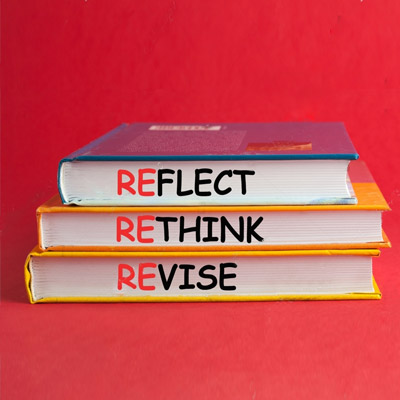
Revisiting initial thoughts and evolving perspectives on inquiry-based learning.
Duration
00:01:05In this video, Grant encourages educators to reflect on their evolving understanding of inquiry-based teaching. By revisiting the "I used to think, now I think" exercise, participants are prompted to capture their current beliefs and insights. Grant emphasizes that it's okay for some beliefs to remain unchanged while also acknowledging new learnings. This reflective practice helps solidify a deeper understanding of inquiry-based education, preparing educators for the planning phase.

Explore the essentials of planning effective inquiry-based learning.
Duration
00:02:03In this video, the focus shifts to the crucial process of planning an inquiry-based learning experience. Grant Lewis emphasizes the need for intentionality and thorough preparation, highlighting the importance of gathering all necessary components before diving into the inquiry. He discusses the significance of collaborative dialogue among teachers to identify priorities and establish meaningful starting points for inquiries. This segment provides a foundation for educators to design purposeful and impactful learning experiences for their students.

Discover key priorities for starting inquiry-based learning effectively.
Duration
00:01:03In this video, Grant Lewis provides a blank screen as a space for you to jot down your own key priorities or potential starting points for planning inquiries. He introduces his "big five" essential factors for effective inquiry-based learning and encourages you to consider these priorities in your context. Lewis invites feedback and additional insights, offering to incorporate them into future presentations to better reflect the complexity of educational practices.

Use your curriculum as a springboard for dynamic inquiry-based learning.
Duration
00:02:01In this video, explore how to use your mandated curriculum as a starting point for inquiry-based learning. The video emphasizes that while the curriculum outlines what needs to be covered, it is up to you to decide how to engage students and bring the content to life. Learn how to use curriculum requirements as a catalyst for deeper, more engaging student inquiry, enhancing both teaching and learning experiences.

Align your inquiry planning with school-wide priorities and mandates.
Duration
00:01:43This video explores how to incorporate school priorities into your inquiry-based learning plans. Whether it’s sustainability, community engagement, STEM, or technology, learn how to weave these priorities into your inquiries. Discover strategies for ensuring that your inquiries reflect your school's goals, whether through thematic focus, visible changes, or specific curriculum integrations. Understand how to balance mandates with engaging, relevant learning experiences for your students.

Ensure new inquiries build on and expand previous student learning.
Duration
00:02:21Explore how to effectively integrate students' previous learning into new inquiries. This video emphasizes the importance of differentiating content from past lessons to maintain engagement. Learn strategies to enhance sophistication, relevance, and age-appropriateness of topics previously covered. Discover how to plan inquiries that build on prior knowledge while introducing fresh perspectives, avoiding redundancy, and keeping students engaged and motivated.

Connect your inquiries to the UN Sustainable Development Goals for relevance.
Duration
00:01:29Discover how to enhance the relevance and impact of your inquiries by aligning them with the UN Sustainable Development Goals (SDGs). This video explores the significance of incorporating these global themes into your teaching to ensure inquiries address real-world issues. Learn how to use the SDGs as a guide to create meaningful, engaging, and impactful inquiries that resonate with students and connect to broader societal challenges.
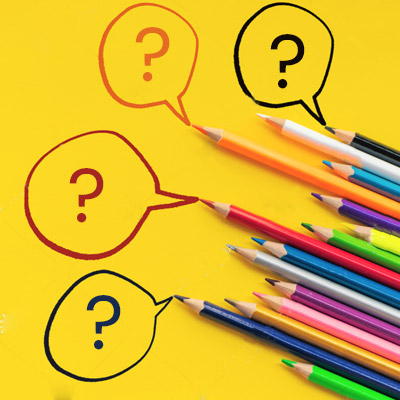
Understand student passions, interests, and needs to shape engaging inquiries.
Duration
00:04:16Explore how to effectively incorporate student voice into inquiry planning. This video emphasizes the importance of understanding students' passions, interests, and needs—referred to as "PINs"—to create inquiries that truly engage them. Learn how to balance these elements with curriculum requirements, school priorities, and previous learning to design inquiries that are meaningful, relevant, and responsive to students’ real-world needs and interests.

Explore frameworks for aligning curriculum with thematic inquiries.
Duration
00:02:55Discover how to effectively map your curriculum against conceptual frameworks and thematic inquiries. This video explores various strategies for aligning curriculum standards with broad themes, such as those used in the International Baccalaureate (IB) program. Learn how to develop and utilize a framework to structure your inquiries, ensuring that your curriculum is organized, purposeful, and integrated into meaningful educational experiences for students.

Find the balance for effective inquiry length and frequency.
Duration
00:03:50Explore how to determine the ideal number and duration of inquiries throughout the school year. This video discusses the challenges of fitting inquiries within arbitrary timeframes, such as a term, and offers insights into balancing inquiry length with student engagement and learning depth. Learn strategies for optimizing inquiry periods, with recommendations for a manageable number of inquiries, typically around six per year, to ensure both rigor and student interest.

Explore how to blend distinct curriculum areas into meaningful inquiries.
Duration
00:02:54This video delves into moving beyond traditional curriculum silos by integrating distinct subject areas into cohesive inquiries. Discover how to creatively combine disciplines like science, history, geography, and the arts into meaningful learning experiences. The video offers insights on aligning curriculum with inquiry design, considering big concepts and the scope of learning, and provides a sneak peek into a detailed resource for further guidance on mapping and designing curriculum effectively.

Learn digital and hands-on methods for curriculum mapping
Duration
00:01:53This video offers practical tips for mapping your curriculum effectively, highlighting both digital and hands-on methods. Discover how to use color-coded documents digitally or traditional paper techniques to align curriculum standards with your inquiry or conceptual frameworks. Emphasizing the importance of team involvement and dedicated time, the video underscores that while curriculum mapping is a significant and time-consuming task, it's essential for creating meaningful and coherent learning experiences.

Explore the power of starting inquiries with provocative statements.
Duration
00:01:48This video delves into the debate of whether inquiries should begin with a statement or a question, advocating for the use of statements. Grant argues that starting with a statement encourages deeper engagement and curiosity, prompting students to ask their own questions and drive their own learning. The video also guides viewers through a process for designing compelling statements that provoke meaningful inquiry and exploration, fostering a more student-centered approach to learning.

Learn how to create inquiry statements using the Structure of Knowledge framework.
Duration
00:03:20This video introduces the Structure of Knowledge framework developed by Lynne Erickson, guiding educators on how to craft meaningful inquiry statements. It explains the process of organizing facts, topics, and concepts to build a powerful statement that encapsulates the essence of learning. The video also provides examples of fully articulated versions of the framework, demonstrating how to effectively populate it for engaging and comprehensive inquiries.

Learn to develop inquiry statements using the Structure of Knowledge framework.
Duration
00:06:01This video explores the process of creating effective inquiry statements using the Structure of Knowledge framework. By organizing facts, selecting key topics, and identifying relevant concepts, educators can craft statements that inspire curiosity and deeper exploration. The video also highlights the importance of language choices in framing inquiries and offers practical examples to help educators refine their approach to building thought-provoking and student-centered inquiries.

Discover the process of refining inquiry statements in curriculum planning.
Duration
00:05:53This video delves into the critical process of refining inquiry statements to ensure they align with curriculum goals and student needs. Through various examples, it demonstrates how adjusting concepts can significantly alter the direction and focus of learning. Educators will learn how to craft and fine-tune principal generalizations that are both challenging and accessible, making them ideal starting points for student-driven inquiries.

Guidance on creating and refining your inquiry statements.
Duration
00:01:26This video offers practical advice on how to craft and refine inquiry statements for your curriculum. You'll learn three different approaches: developing a new inquiry, reflecting on a past inquiry, or creating a hypothetical one. By examining facts, topics, and concepts, you'll build principal generalizations that guide student learning. The video encourages educators to submit their work for feedback, making it an interactive and growth-focused experience.

Learn to divide big ideas into digestible, manageable inquiry steps
Duration
00:02:16This video guides educators on how to break down a big idea or inquiry into smaller, more manageable parts that students can effectively engage with. By advocating for dividing inquiries into three or four outcomes or lines of inquiry, the video emphasizes achieving depth and rigor in learning. It challenges educators to create balanced and impactful inquiries that maintain focus without overwhelming students, ensuring a rich and meaningful learning experience.

Explore ways to break down big ideas into manageable learning outcomes.
Duration
00:01:31This part guides educators through the process of dissecting a big idea into smaller, actionable learning outcomes. It explores different approaches—conceptual, content-based, or process-related—to ensure that each part of the inquiry aligns with the overall goal. By considering the structure of knowledge, the video helps educators ensure that essential concepts, content, and processes are covered, making the learning experience comprehensive and effective for students.

Real-world examples of dividing big ideas into actionable learning outcomes.
Duration
00:05:35This video provides educators with practical examples of how to break down big ideas or inquiry statements into smaller, focused learning outcomes. Through real classroom scenarios, it demonstrates how to incorporate concepts, content, and processes to ensure comprehensive learning. Whether it’s exploring states of matter or examining ethical challenges, the video emphasizes the importance of aligning inquiries with curriculum goals while allowing students to engage deeply with the material.

Exploring effective teaching strategies that impact students' thoughts, emotions, and actions.
Duration
00:02:02This video delves into the nuanced approach of teaching by focusing on three key areas: head, heart, and hands. It emphasizes the importance of designing learning experiences that not only challenge students' thinking but also engage their emotions and encourage hands-on activities. By integrating these elements, educators can create more meaningful and impactful learning experiences that resonate with students on multiple levels.

Designing provocations to stimulate students’ thinking, emotions, and actions.
Duration
00:06:03This video explores how to effectively use provocations to engage students’ heads, hearts, and hands at the start of an inquiry. It emphasizes designing provocations to provoke thought, emotion, or action and discusses two types: content-based and conceptual. By offering real-life experiences or engaging activities, educators can deepen students' understanding and empathy. Examples are provided, illustrating how provocations enhance learning by making concepts more relatable and impactful.

Create provocations to spark curiosity and engagement in learners.
Duration
00:02:01This video encourages educators to design provocations that captivate students' minds, hearts, and hands, either conceptually or content-based. Instead of starting with a pre-assessment, it advocates for engaging activities that excite and involve students right from the start. By crafting thought-provoking and stimulating provocations, educators can spark genuine interest and enthusiasm, making learning more dynamic and impactful.
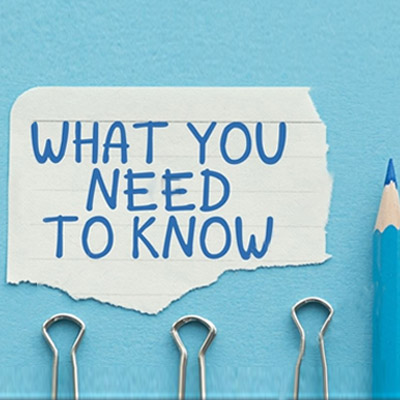
Effective use of KWL to enhance student engagement and planning.
Duration
00:02:18This video explores the KWL (Know, Want to know, Learned) strategy for gauging student knowledge and interests. It discusses common pitfalls, such as ignoring student input or failing to use it in planning. Instead, it offers practical ways to leverage KW-L activities to actively involve students in their learning process. Discover how to make KW-L more meaningful and impactful in your classroom.

Enhancing KWL with structured, focused breakdowns for deeper learning.
Duration
00:02:34This video redefines the traditional KWL (Know, Want to know, Learned) chart by breaking it down into more detailed, focused sections. Instead of a broad approach, it uses specific outcomes and indicators to guide student responses, ensuring targeted and meaningful engagement. Learn how to refine your KW-L activities to better align with content objectives and foster deeper student inquiry and exploration.
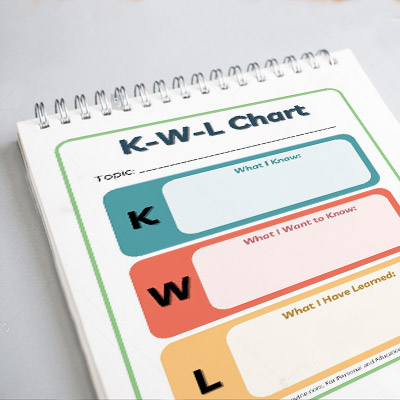
Using KWL insights to refine teaching strategies and focus on gaps
Duration
00:01:15This video demonstrates how to use KWL (Know, Want to know, Learned) charts to inform your teaching strategy. By analyzing students' responses, you can identify what they already know and what needs more focus. Learn how to bring this data to planning meetings to streamline instruction, avoid redundant teaching, and address knowledge gaps effectively, ensuring a more targeted and engaging learning experience.

Tracking student inquiries over time with an enhanced KWL method.
Duration
00:02:08This video explores an advanced version of the KWL chart, designed for tracking student learning over time. By breaking down students' questions and interests week-by-week, educators can identify persistent gaps and adjust instruction accordingly. Learn how to use this approach for continuous feedback and effective planning, ensuring that students' evolving questions and needs are addressed throughout the learning process.

Crafting lessons that capture students' interests and align with curriculum.
Duration
00:03:11This video focuses on designing learning experiences that engage students’ minds, hearts, and hands while aligning with curriculum outcomes. It highlights the importance of using a roadmap derived from KWL insights and other strategies to guide your unit. Discover how to create dynamic, interactive lessons that sustain student interest and address their evolving questions, ensuring a rich and effective inquiry-based learning environment.

Balancing teacher control and student autonomy during inquiry.
Duration
00:03:32This video explores the dynamic balance between teacher control and student autonomy in inquiry-based learning. It emphasizes that while teachers initially guide and provoke, they must adapt and shift control as students become more capable and engaged. Discover strategies for adjusting your approach based on student needs and learning progress, ensuring a responsive and effective inquiry experience.

Develop thinking skills through effective questioning and planning.
Duration
00:07:59This video delves into developing thinking skills during inquiry-based learning. It covers using organizers and questioning techniques to enhance student thinking, ensuring developmentally appropriate strategies, and having a clear plan for skill development. Learn how to use explicit language to foster critical thinking, the importance of planning for thinking skills, and how to integrate these practices into your classroom effectively.

Transform teacher-led activities into genuine student-led actions.
Duration
00:06:44This video delves into the concept of student-led actions within inquiry-based learning. It stresses the importance of creating space for students to take meaningful action based on their learning rather than planning these actions for them. Through examples and reflections, discover how to shift from teacher-directed activities to empowering students to lead and execute their ideas, enhancing their ownership and engagement.
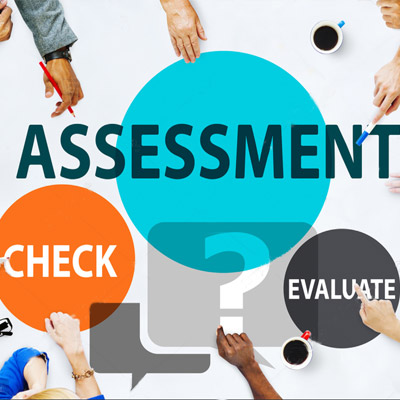
Strategies for embedding and assessing learning during inquiries.
Duration
00:11:22This part of the course discusses how to integrate assessment within inquiry-based learning, rather than as a separate, summative task. Explore four key methods for assessing student learning: evaluating individual understanding of central ideas, measuring knowledge against outcomes, checking curriculum-based evidence, and using rubrics. The video emphasizes the importance of capturing evidence throughout the inquiry process and advises against assessing the actions students take as a result of their learning.

Effective methods for reflecting on and improving post-inquiry practices.
Duration
00:03:35This video explores methods for reflecting on an inquiry after its completion. It covers various reflection tools like the WWW, EBI chart, PMI, and SWOT analysis, and emphasizes the importance of structured reflection to gather valuable insights. Learn how to use reflection to assess what worked well, identify areas for improvement, and apply lessons learned to enhance future inquiries, ultimately improving teaching practices and student learning experiences.

Assess your growth and evolving thoughts throughout the inquiry course.
Duration
00:00:53The ending module encourages educators to revisit and reflect on their initial thoughts versus their current understanding after completing the course. They are encouraged to document how their perspectives have changed, identify any new insights, and evaluate which concepts remain consistent. This reflective process is essential for understanding their growth in inquiry-based learning and appreciating the progress made throughout the course.